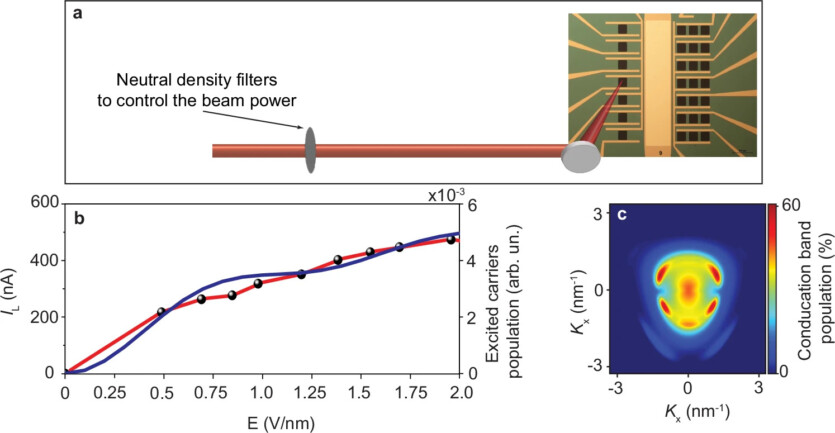
A group of researchers from the University of Arizona, The Jet Propulsion Laboratories of the California Institute of Technology and Ludwig-Maximilians-University of Munich have created the first ultrafast photonic transistor, capable of speed up calculations a million times.
Scientists have learned how to pass electrons through graphene using light pulses lasting less than trillionths of a second. The results obtained during the experiments demonstrated that the technology is capable of processing data at a speed of petahertz, which is a thousand times faster than modern microchips.
The project was led by Mohammed Hassan is a professor of physics and optical sciences at the University of Arizona. Before that, he worked on the development of the fastest electron microscope in the world. According to him, software development is far ahead of hardware improvement, especially in the field of artificial intelligence. Quantum technologies can help close the gap.
The researchers were studying the electrical conductivity of modified graphene samples with a thickness of one carbon atom. A laser beam striking the surface of graphene excites electrons and generates an electric current. However, the peculiarities of the radiation energy wave and the symmetrical structure of graphene often cause mutual compensation —the wave oscillates up and down, creating equal but opposite flows on both sides of the material.

By experimenting with different samples, the scientists saw that individual electrons can slip through the structure and can be observed in real time. To create an ultrafast photonic transistor, the researchers covered a graphene phototransistor with a special layer of silicon.
The system was controlled by pulses of light that switch every 638 attoseconds, or one quintillionth of a second. This element, basic to modern electronics, regulates the movement of charged particles between two points, acting as a switch or amplifier.
It is also important that the system does not require specific temperature or pressure conditions for operation Despite using a specialized laser in the initial experiment, the team is working on version of the transistor, compatible with available industrial equipment.
Silicon-free: «the world’s first 2D GAAFET transistor» 40% faster than Intel’s counterparts
The results of the study were presented in the journal Nature
Source: TechSpot

Spelling error report
The following text will be sent to our editors: